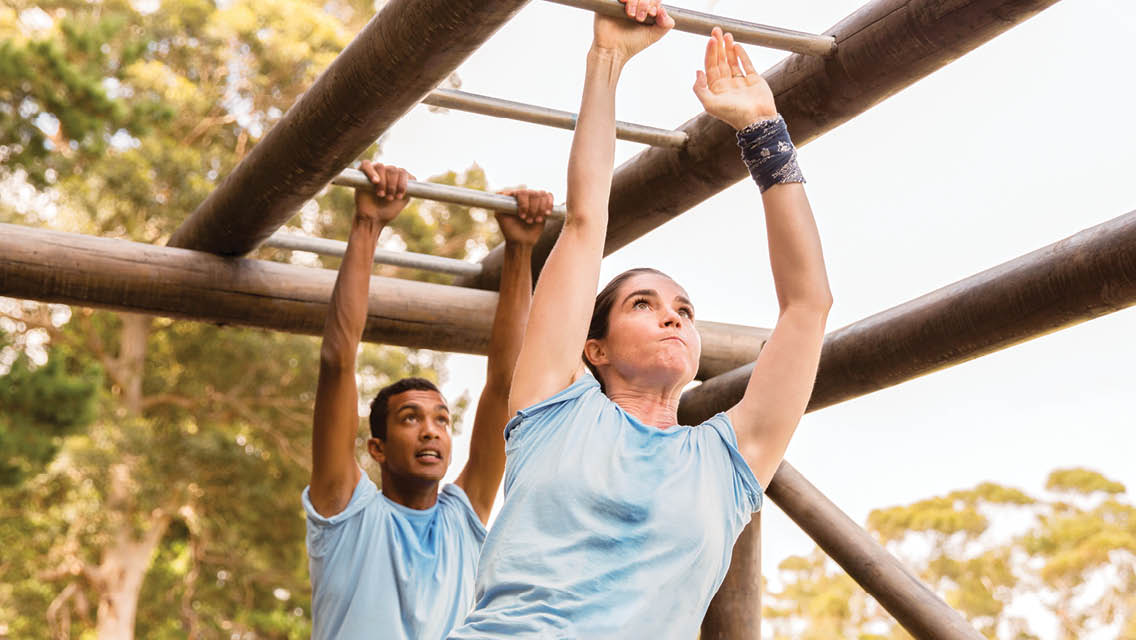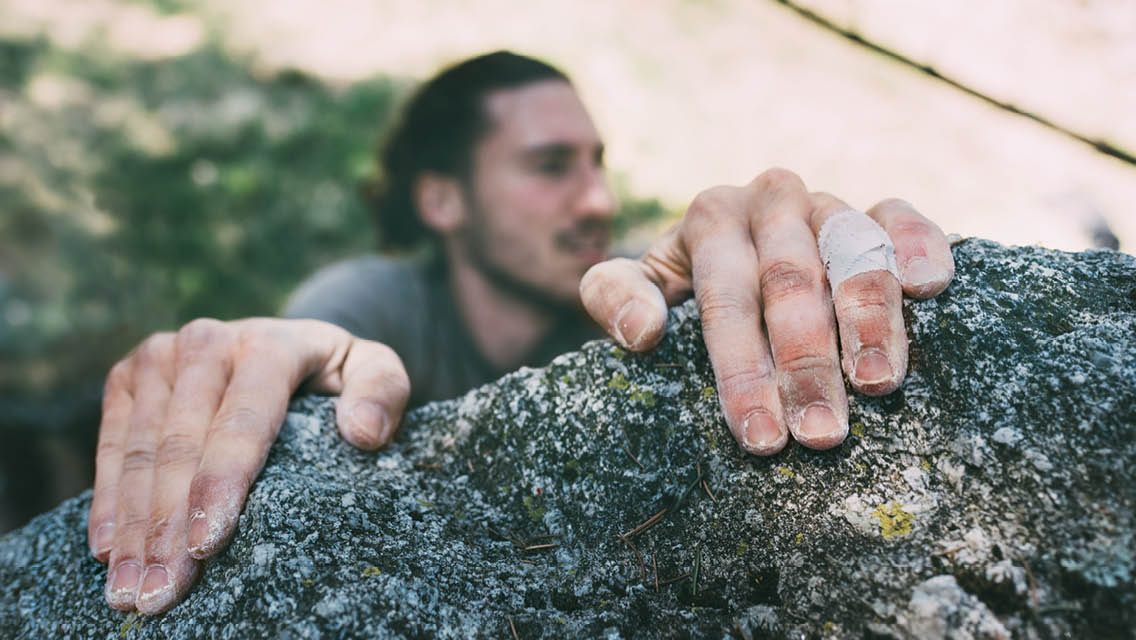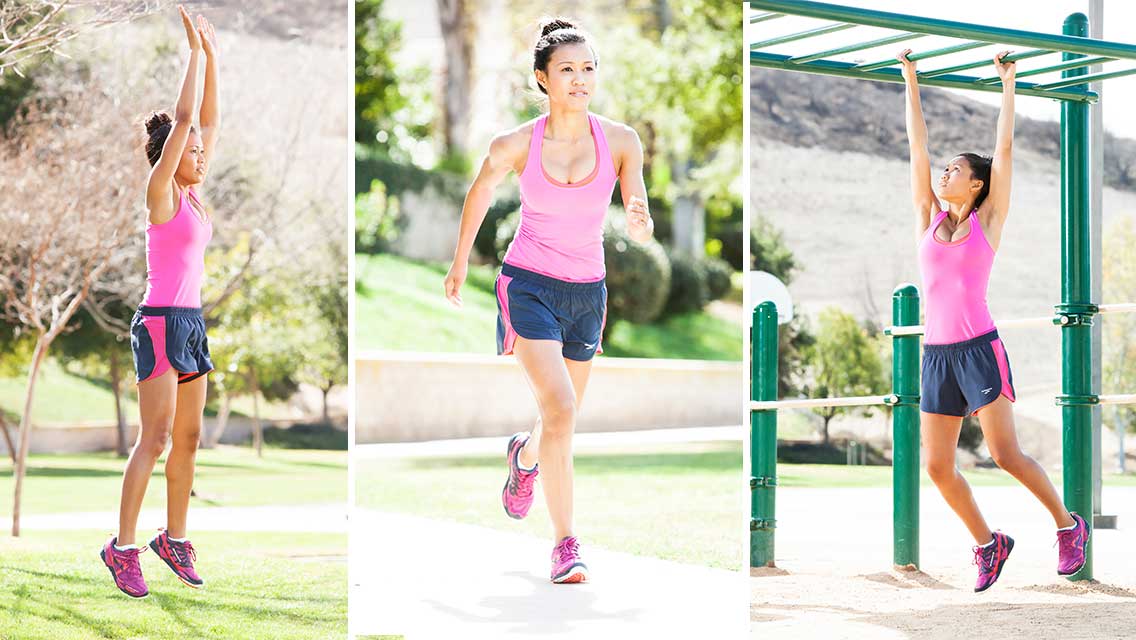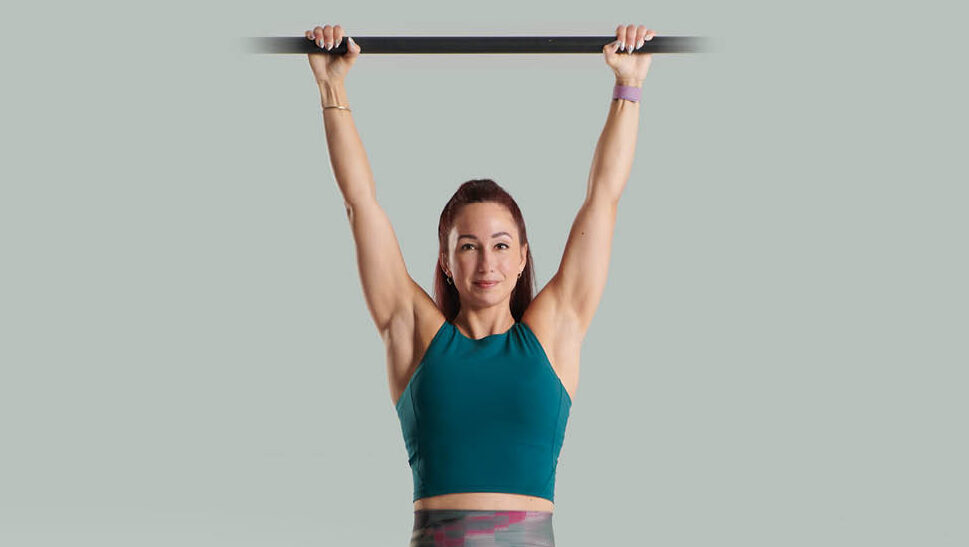For an adult, navigating the monkey bars can be challenging — not just because you’re bigger than your kid self but also because you’ve likely accumulated some movement baggage over the years. “To start it as an adult typically takes more than just doing it, especially if years of shoulder, neck, and arm tension have created patterns of wear on your ligaments and left you with some major muscle atrophy,” says biomechanist Katy Bowman, MS, founder of Nutritious Movement and coauthor of I Know I Should Exercise, But … : 44 Reasons We Don’t Move and How to Get Over Them (read an excerpt for Bowman’s book here).
If it’s been years since you’ve swung across a jungle gym, she adds, start with hanging progressions and gradually work toward monkey-bar mastery.
How to do it:
- Start by gripping the first bar with your leading hand. Use momentum to begin swinging your body forward.
- As the opposite side of your body swings forward, reach that arm to the next bar.
- Gently swing your body backward, then use the momentum from your backswing to generate your next swing forward. Continue alternating arms.
Troubleshooting:
Most people aren’t going to be able to traverse the monkey bars without building up strength and endurance. Bowman recommends the following progressions.
- Practice hanging from a bar with both feet on the ground, using your legs as much or as little as you need them. Try to hang without letting your shoulder blades pop up toward your ears.
- Once you can hang without support and with active shoulder blades, practice a two-handed swing, continuing to keep your shoulder blades down.
- Practice “shuffling” across a bar or the sides of the monkey bars, shifting your weight from one hand to the other as you move sideways.
- When you can hang from a single hand for a moment, try doing the monkey bars hand over hand, taking one rung at a time. Start by hanging with both hands. Then reach one hand to the next rung, and bring up the other one beside it. Take turns with your reaching arm.
Playfully Strong
Play is proven to boost physical and mental health — for kids and adults alike. But what does play look and feel like once we’re grown and prone to injury? And how can we get more of it in our lives? Explore “How Play-Inspired Moves Can Boost Your Fitness” (from which this article was excerpted) for more ways to added play-inspired moves to your fitness routine.






This Post Has 0 Comments